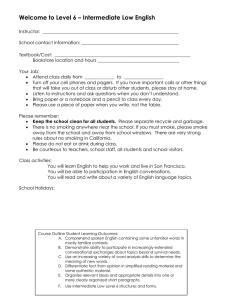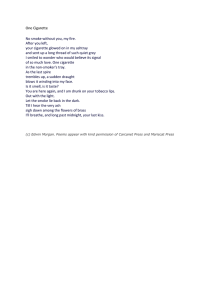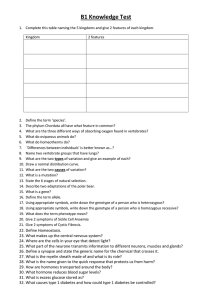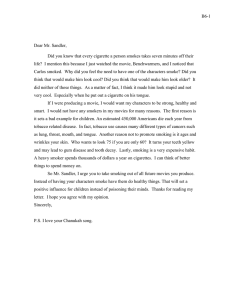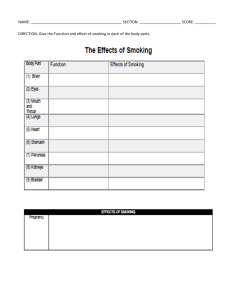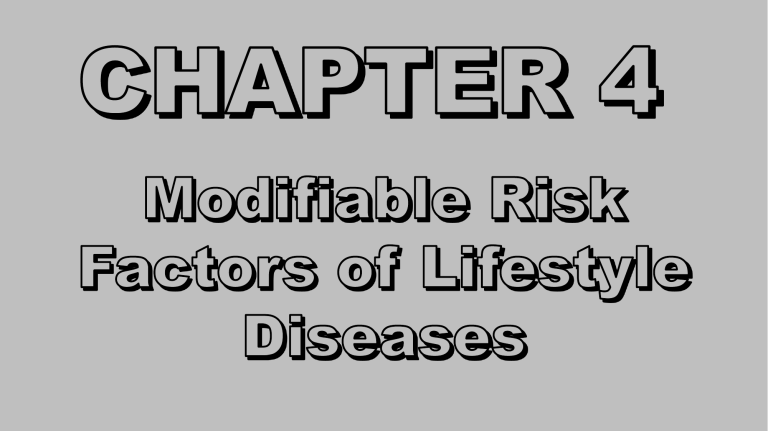
• Almost every organ in the body is damage when a person smokes. It weakens the body and leads to many diseases. • Around 5-8 million die yearly from tobacco, where in one individual dies every eight seconds. • A stock of cigarette has more than 4,000 chemicals and consuming it would cut an individual’s life for at least five minutes. • Others who are expose to cigarette smoke are also at risk of chemical effects. • The smoke contains hydrogen cyanide (a deadly substance used in gas chambers), insecticide, methanol and butane fuels, benzene (causes leukemia), cadmium, and formaldehyde. • The chemical mixture impairs the function of the cardiovascular and respiratory system. It accelerates atherosclerosis and destroys the cilia in the lungs. • Tar, nicotine, and carbon monoxide are substances from tobacco that are among the most harmful to health. TAR – is a harmful byproduct of smoking cigarettes. This toxic substance is carcinogenic and accumulates inside the respiratory system. Nicotine – is a toxic chemical compound that mostly consists nitrogen, which also makes cigarettes addictive. It makes the heart beats fast, brings lightheadedness, and upsets stomach. Carbon monoxide – is a poisonous chemical from burnt cigarette that makes the heart to do more work to supply sufficient oxygen in the body. Mainstream smoke – commonly known as “firsthand-smoke” is the smoke from lit cigarette that is both inhaled and exhaled. Second-hand smoke – is a very dangerous smoke when taken in. it is smoke puffed out by smokers called environmental tobacco or “sidestream” smoke. Third-hand smoke – refers to cigarette offshoots which is attached to the smoker’s hair and clothing as well as various surfaces like walls, floors, furniture, chairs, and toys. This will remain in the environment even if the smoke is already gone. •Addiction •Stress •Aggressive Marketing •Weight control •Nicotine Dependence •Limited Education •Depression •Parental Role Model •Adolescent Experimentation and Rebellion •Fear of weight gain •Pleasure Dietary habits – are the usual choices of food that people make. Diet affect an individual’s health condition. For a person to grow and develop, he/she needs a healthy and balanced diet that provide energy for everyday activities. Poor dietary habits occur when the person does not follow the principles of good nutrition-adequacy, balance, and variety. Adequacy – refers to moderate amounts of nutrients to maintain normal body function. Balance – refers to combination of nutrients. Variety correct – refers to consumption of different types of food products. Poor dietary habits lead to malnutrition, resulting to stress, tiredness, sleep deprivation, weak brain functions, indigestions, and heart problems. It add up to the risk of developing diseases and health problems such as: •Obesity •Tooth decay •High blood pressure •High cholesterol •Heart disease and stroke •Type-2-diabetes •Osteoporosis •Certain types of cancer •Depression •Eating disorders Occurs when an individual lacks the recommended level of regular physical activity or if he/she is physically inactive. Physical inactivity is the leading risk factor of death worldwide. According to WHO, 60-85% of the world’s population does not have enough physical activity. In the Philippines, the 7th National Nutrition Survey in 2008 reveals that nine out of ten Filipinos do not exercise regularly. •Increase risk of certain cancers •Contribute to anxiety and depression •Risk factor to certain cardiovascular diseases •High blood pressure and increased cholesterol levels •Decrease in skeletal muscle mass due to excessive sitting •Increase risks of having a coronary heart disease and obesity 1. Cardiovascular disease – is a disease of the hearth and blood vessels and it the leading cause of death in the Philippines. Types of cardiovascular diseases Rheumatic Fever immune system attacks the heartfat andhardens can cause Atherosclerosis – type –ofthe arteriosclerosis where deposited andfever, becomes damage its valves. It is as common teens plaqueweakness, on arterial and walls. Plaque to build-up can begin early asamong two years old.and results to a permanent damage known as rheumatic heart disease Angina Pectoris – chest pain from narrowed coronary arteries due to inadequate oxygen – the heart is not able or below its normal for theCongestive heart. Usually lastHeart less than Failure five minutes. capacity of pump blood, causing liquid to accumulate in the lungs and other areas of Coronary – coronary arteries (pathway of blood to the heart muscles) are the body. heart Reducingdisease salt and salty foods help manage this condition. narrowed or blocked; a disease of the coronary vessels and not the heart. Heart Rhythm Abnormalities/Arrythmia – irregular heart rhythm Arteriosclerosis – a conditionpalpitation) causing the arteries to harden andelectrical thicken. conduction Some types are (i.e., bradycardia, tachycardia, brought about by faulty naturalsystem to growing that isold. worsened by uncontrolled stress levels and high caffeine intake. Heart attack – cardiac muscle failure due to lack of blood flow to the heart. Signs include painful pressure in the center of the chest spreading to the shoulders, neck and jaw, lightheadedness, sweating, nausea, and shortness of breath. 2. Cancer – a disease where cells divide on an uncontrolled pace. These cells can form a tumor, which be identified benign or malignant through biopsy procedure. What is the difference between malignant and benign tumor? MALIGNANT IS CANCEROUS. The tumor can spread to invade and destroy nearby tissues and body parts. This process is called metastasis. BENIGN IS NOT CANCEROUS. Benign tumors may increase in size but do not invade other body parts. It is typically harmless unless it obstructs normal tissue or organs. Carcinoma is the most common of the major categories; an invasive malignant tumor from epithelial that tents to spread to other body parts. Cancers of the skin, breast, uterus, prostate, lung, stomach, colon, and rectum are examples of carcinoma. Sarcoma is a connective or supportive cancer, which include muscle, bone, fat, blood vessels, and cartilage cancers. Leukemias the cancer of the blood or bone marrow characterized by an abnormal production of blood cells, usually leukocytes or white blood cells. Lymphoma arises in cells of the lymphatic or the immune system tissues characterized by abnormal production of white cells and decrease in resistance. 3. Diabetes or Diabetes Mellitus – disease resulting from a condition of the body wherein the body is not able to produce or effectively use insulin. Insulin is a hormone that is produced in the pancreas, which regulates the utilization of glucose. Type 1 Diabetes is insulin-reliant because the body produces little or no insulin at all. The immune system destroys the cells producing insulin, which causes the build-up of sugar in the blood and loss of sugar in the urine. Its symptoms include increased thirst, frequent urination, continuous hunger, weight loss, blurred vision, and tiredness. Type 2 Diabetes is non-insulin dependent. This occurs when the body produces insulin but it cannot be used by cells. This type of diabetes is manageable through oral medication and a lifestyle based on diet and exercise program. Symptoms are usually not very obvious and may go undetected for many years. Gestational Diabetes – occurs in certain pregnant individuals. The hormones cause the body not to respond to the insulin produced by the body. This is not harmful to the baby and can be treated only with proper diet. Gestational diabetes usually regresses after childbirth but has higher chances of developing into type 2 diabetes. 4. Chronic Respiratory Disease – commonly called chronic obstructive pulmonary disease (COPD); occurs in the air paths and other parts of the lungs. Symptoms include breathlessness, chronic cough, and excessive mucus production. COPD can be life-threatening and may lead to death if not detected and cured early. Major risk factors of COPD include: • • • • Tobacco smoking Indoor air pollution Outdoor air pollution Occupational dust and chemicals like vapors, irritants, and fumes. “Health is Wealth.” A healthy lifestyle is all about making one’s health and well-being a priority. It is a choice made by an individual, a commitment made for his own good and that of his love ones. Noncommunicable disease prevention requires and individual to follow certain guidelines leading to a healthy lifestyle. The following guidelines will lead to healthy living habits: •Eat healthy food. This include fruits, vegetable and whole grains. Go for lean meats and low-fat dairy products. Do not eat food with too much sugar or fat or dine in at fast food. •Do not smoke. Gaining a little weight is a lesser risk than to keep smoking. Many who quit smoking did not gain weight •Drink moderate amounts of alcohol only. Tow average-sized drinks daily for men; one for women. •Manage stress. Many individuals use eating means of managing stress. A lot of stress will be tough in making healthy changes to your lifestyle. •Do daily routines for physical activity. You do not need to go to the gym regularly or do marathons but rather, include physical activities into your daily routine. •Stop comparing yourself to others. A healthy body does not come in one shape and size. Do not get frustrated over unrealistic body shape; being healthy is more important. •Awareness of how hungry or full you are. Be aware of why you eat and how much you need to eat. •It’s not about diet; its more of the routing. Dieting almost never works over the long term. It is more of the routine of eating properly. •Be determined that you’re going to improve your health, instead of just deciding to go on a diet. For instance, you may think of what you want: to be fit; lower blood pressure; lower blood sugar, and cholesterol. Pilipinas Go4Health aims inform and encourage all Filipinos to practice a healthy lifestyle by committing to physical activity, proper nutrition, as well as minimizing or quitting cigarette smoking and alcohol consumption. The Go4Health Program includes the “Go Smoke-free”, “Go Slow sa Tagay,” Go Sustansya,” and “Go Sigala.” Highlights the bad effect of smoking. Ever hour, ten Filipinos die from of illnesses related to cigarette smoke. There are 17.3 million Filipinos, ages 15 years up who smoke. Smoking causes lung cancer, emphysema, and bronchial disorders. Advocates the use of alcohol drinks in moderation. It features the major health risk of consuming too much alcohol as well as related drunk-driving accidents. Aims to prevent hypertension and cardiovascular diseases as well as obesity by campaigning for reduced consumption of salt, sugar, fats, and high calorie food. Hence, increased intake of fiber lowers cholesterol and blood sugar levels. Emphasized on regular exercise of at least three to four times a week. Out of 100 Filipino adults, only seven do regular exercises.

